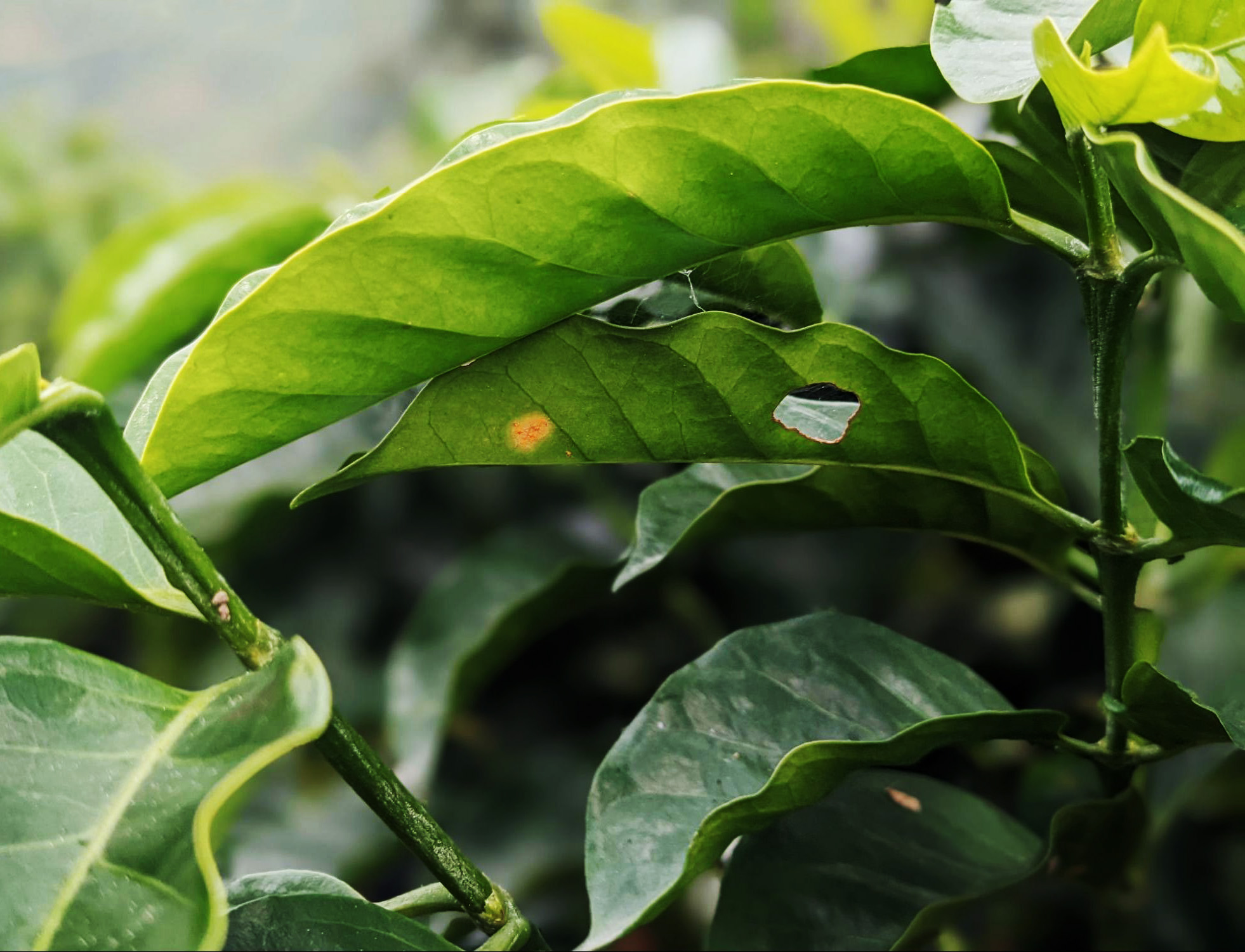Typica, Bourbon, and the traditional varieties descended from them are highly susceptible to the coffee leaf rust fungus, Hemileia vastatrix. Aware of the devastating potential of this disease, researchers at Cenicafé began studying rust-resistant varieties in 1960, a full decade before coffee farmers first spotted the fungus in the Americas (Cortina et al 2013).
 Coffee leaf rust can infect resistant varieties, but it causes less-severe disease.
Coffee leaf rust can infect resistant varieties, but it causes less-severe disease.
Once leaf rust arrived in Brazil in 1970, Cenicafé’s breeding program began in earnest, racing to produce a rust-resistant hybrid before the disease reached Colombia. The result, created in 1980 and distributed in the following years, was the Colombia variety, a cross between Caturra and the Timor Hybrid.
Rust was detected for the first time in Colombia a few years later, in 1983. By 1989, the disease affected more than 700,000 hectares in the country (Gordillo 2005) — over 70% of the planted area at the time (FAOSTAT 2022).
Unless farmers apply fungicides to susceptible varieties, leaf rust can reduce their coffee production by up to 23%. Fungicides can reduce the impact of the disease, but they add significantly to the cost of production. Furthermore, high rainfall in Colombia reduces their effectiveness, and applying fungicides to plants on the steeply sloped terrain can be challenging (Cortina et al 2013). The FNC adopted a policy of promoting rust-resistant hybrids such as Colombia and Castillo, and these varieties now make up the great majority of coffee planted in Colombia.
When developing the Colombia variety, Cenicafé chose to pursue a strategy of multi-line resistance. This means that Colombia is not a single stable variety, but a collection of related lines from the same breeding program. The genetic diversity of a multi-line variety makes for more durable resistance, but it also means that trees of the same variety will have slightly variable characteristics (Flórez Ramos et al 2017).